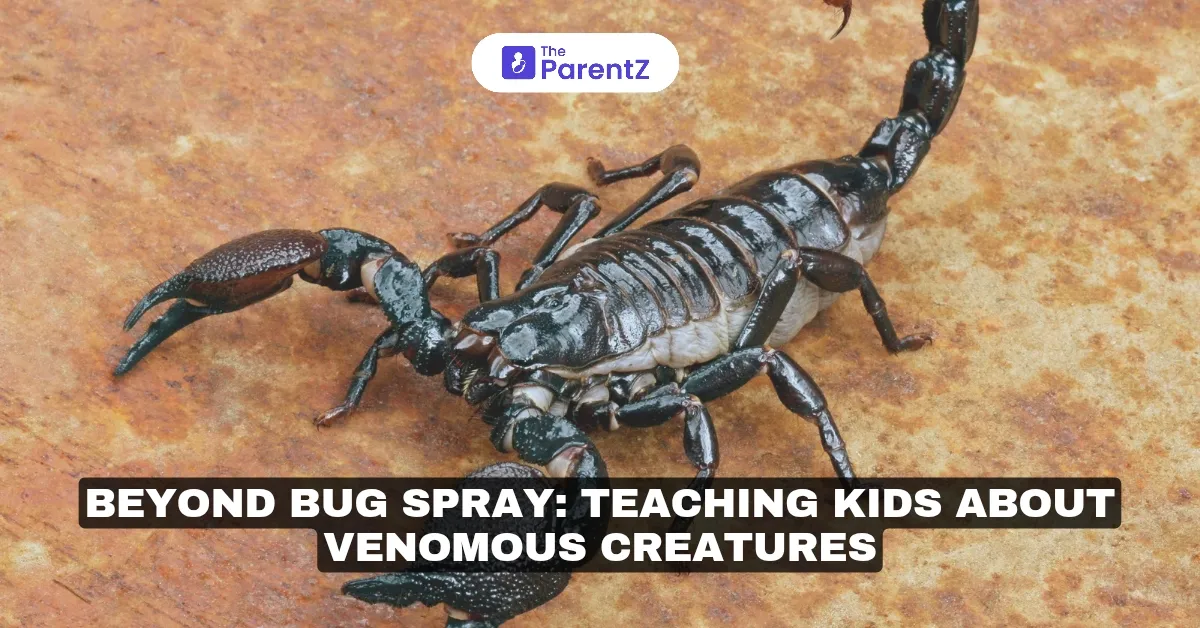Children love to explore the outdoors, but nature is home to various venomous creatures like snakes, spiders, and scorpions. While bug spray helps repel insects, it doesn’t protect against venomous bites and stings. Teaching kids about these creatures, their habitats, and safety measures is essential for preventing dangerous encounters.
Understanding Venomous Creatures
Venomous creatures inject venom through bites or stings, unlike poisonous animals, which release toxins when touched or eaten. Some common venomous creatures kids should know about include:
• Snakes – Cobras, rattlesnakes, and vipers can deliver dangerous bites.
• Spiders – Black widows and brown recluses have venomous bites that cause pain and swelling.
• Scorpions – Their stings can range from mild irritation to life-threatening reactions.
• Bees and Wasps – Some species cause severe allergic reactions (anaphylaxis) in sensitive individuals.
• Jellyfish – Found in oceans, their tentacles contain venomous stingers.
How to Teach Kids About Venomous Creatures
Children don’t need to fear nature but should learn how to stay safe. Here’s how parents can educate them:
• Use books and videos – Age-appropriate resources can introduce kids to venomous creatures in an engaging way.
• Teach safe outdoor habits – Encourage children to:
• Avoid touching unknown insects or animals.
• Stay on designated trails while hiking.
• Check shoes and clothes for hidden creatures.
• Explain warning signs – Many venomous animals have bright colors, rattling sounds, or defensive postures that signal danger.
• Role-play safety scenarios – Practice what to do if they encounter a snake or get stung.
Immediate Actions for Bites and Stings
If a child is bitten or stung by a venomous creature, quick action is crucial:
1. Stay calm – Panic can worsen symptoms.
2. Identify the creature – If possible, note its color and size without trying to catch it.
3. Do not suck out venom – This can spread the toxin faster.
4. For snake bites:
• Keep the child still to slow venom spread.
• Keep the bite area below heart level.
• Call emergency services immediately.
5. For spider and scorpion stings:
• Wash the area with soap and water.
• Apply a cold pack to reduce swelling.
• Seek medical attention for severe pain, swelling, or breathing issues.
6. For bee or wasp stings:
• Remove the stinger by scraping (not squeezing) it out.
• Apply ice and monitor for allergic reactions.
Preventing Encounters with Venomous Creatures
• Wear protective clothing – Long sleeves, pants, and closed shoes help reduce exposure.
• Use insect repellent wisely – While bug spray deters insects, it doesn’t protect against spiders, snakes, or scorpions.
• Teach kids to inspect surroundings – Check under rocks, in tall grass, and inside shoes before stepping in.
• Avoid swatting at insects – Rapid movements can provoke them.
• Keep outdoor areas clean – Remove clutter and woodpiles where venomous creatures may hide.
When to Seek Emergency Medical Help
Seek immediate medical attention if a child:
• Has trouble breathing or swelling around the face.
• Develops severe pain, dizziness, or nausea.
• Experiences muscle paralysis or unconsciousness.
Conclusion
Bug spray isn’t enough to protect kids from venomous creatures. Educating children about their surroundings, recognizing dangerous animals, and knowing first-aid measures are key to keeping them safe. Encourage curiosity while teaching respect for nature to ensure enjoyable and risk-free outdoor adventures.









Be the first one to comment on this story.